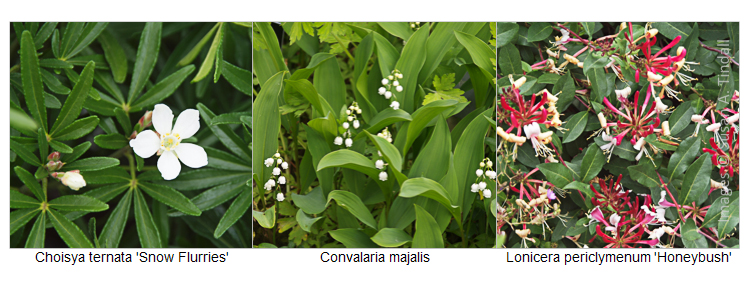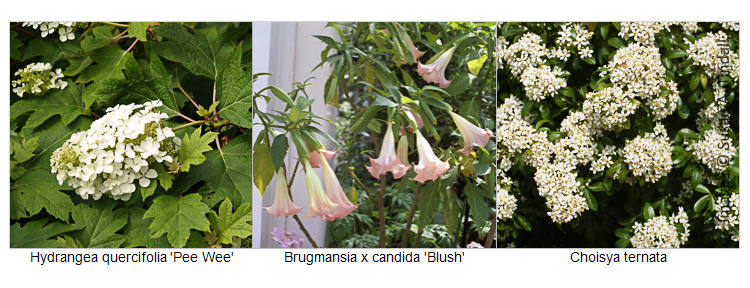After the stresses and tension of the day, taking time to relax, even contemplate, is soothing and beneficial. Taking time out to simply sit in one’s garden can regenerate one’s being and may introduce a new dimension to your life. The evening garden is stripped of the babble of bright colour – everything is simplified, and among the shadows the colour white can softly remain, sometimes almost luminous in its quality of light. With vision limited, elusive scents can emerge to engage and entice the least indulged of our senses.
The effect of fragrance is best when held in a space that is sheltered from strong breezes. If there are warm, heat-retaining south or west facing walls that nurture plants the effect of scent can be intensified still further. Plants with evening and night fragrance can be selected to take you through from late spring to autumn. Some plants are compact enough to grow in containers on the patio, or may be robust like a honeysuckle that can be trained to climb over an arch and envelop a seat with its exquisite fragrance. The following are suggestions, among other possibilities.
In May the popular ‘Mexican Orange Blossom’ is fragrant both in the day and evening. The species eventually grows to be a large shrub, but Choisya ternata Snow Flurries = ‘Lisflurry’ is more compact and could be grown in a large container. The fragrance is sweet and the shrub itself, being evergreen, is attractive all year round. On a modest scale, the herbaceous lily of the valley Convallaria majalis with tiny bell-flowers has exceptional fragrance and can be grown in a container or tucked into shady corners and left to naturalise.
There are a good number of summer flowering plants that have evening fragrance. The classic is the honeysuckle Lonicera periclymenum and its forms, including the compact shrubby Lonicera periclymenum ‘Honeybush’ which only reaches around half a metre in height.
Classic cottage garden plants often have evening or night fragrance. These include the lanky common Evening Primrose Oenothera biennis with flowers that briefly appear luminous in the dusk, the delicious Sweet Rocket, including the white flowered form, Hesperis matronalis var. albiflora, and finally the Tobacco plant, which is available in compact varieties suitable for containers, as well as 1.2 metre high white Nicotiana alata with its sweet heavy fragrance that hangs in the air.
If climbing plants can be included in your garden the frost-tender Jasminum polyanthum has an intense and heady fragrance. It can be hard pruned in autumn and kept in a conservatory for winter. In sheltered gardens with warm walls the Star Jasmine Trachelospermum jasminoides entices all with the fragrance of its numerous four-petalled white flowers.
In late summer and early autumn the herbaceous Phlox paniculata forms make a contribution. Continuing the white-flowered theme try Phlox paniculata ‘White Admiral’ followed by the later flowering Phlox paniculata ‘Mount Fuji’ to extend the season of interest. Surprisingly there is a late season fragrant hosta especially scented at night, so seek out Hosta plantaginea . The frost-tender willow-leaved Jessamine, Cestrum parqui has a sweet fruity fragrance at night. This can be kept in a container and brought under cover for winter.
If there is room, the magnificent oak-leaved hydrangeas provide excellent autumn colour and have domed heads of flowers with a fragrance described as being ‘clean, sweet’. A compact form of this excellent species is Hydrangea quercifolia ‘Pee Wee’. And given space, the highly poisonous, frost-tender, 4 metres high Datura forms have exceptional scent, for example Brugmansia x candida ‘Blush’ which has enormous dangling trumpet flowers and enthrals all with its magnificence!
Enjoy!
Susan A. Tindall
All the plants mentioned in this article are available to see in our plant finder. Just follow the link from our homepage. This includes much more details of the plants along with care instructions.





